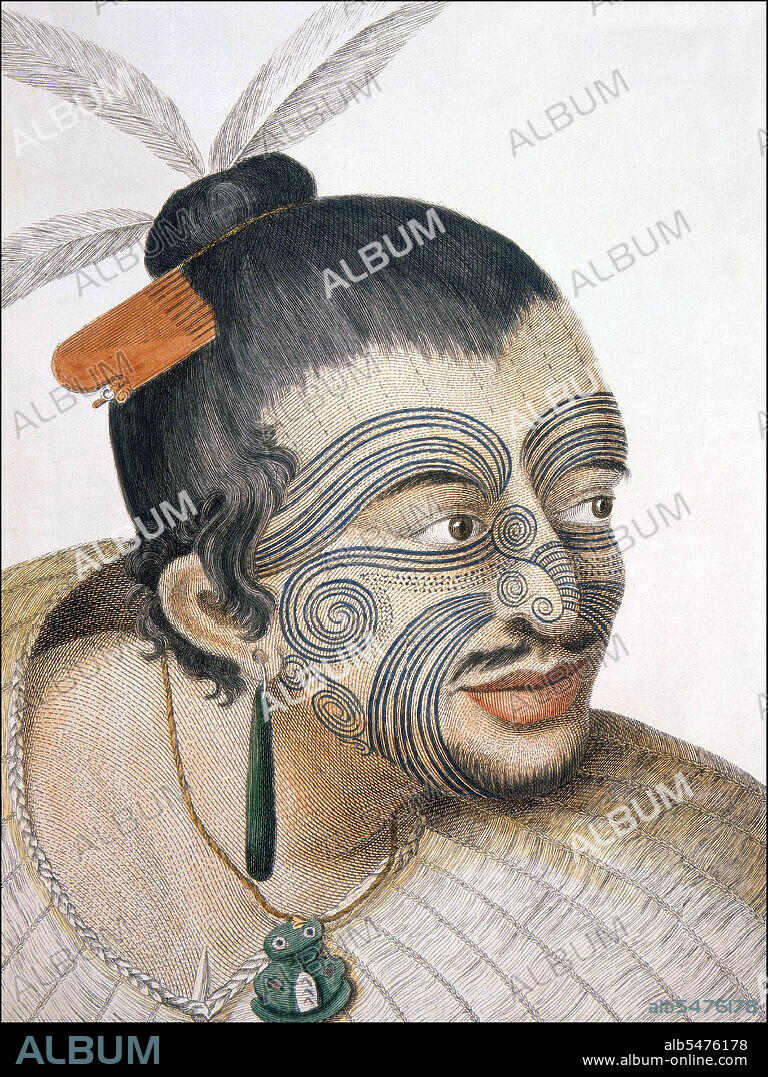alb5476178
New Zealand: A Maori chief with facial moko tattoo, Sydney Parkinson,1769

|
Ajouter à une autre Lightbox |
|
Ajouter à une autre Lightbox |



Avez-vous déjà un compte? S'identifier
Vous n'avez pas de compte ? S'inscrire
Acheter cette image

Titre:
New Zealand: A Maori chief with facial moko tattoo, Sydney Parkinson,1769
Légende:
Voir la traduction automatique
Head and shoulders portrait of a Maori man, his hair in a topknot with feathers and a bone comb, full facial moko, a greenstone earring, a tiki and a flax cloak. He has a small beard and a moustache. Sydney Parkinson (1745-1771) was the artist on Captain Cook's first voyage to New Zealand in 1769. Ta moko is the permanent body and face marking by Maori, the indigenous people of New Zealand. Traditionally it is distinct from tattoo and tatau in that the skin was carved by uhi (chisels) rather than punctured. This left the skin with grooves, rather than a smooth surface. Captain Cook wrote in 1769: 'The marks in general are spirals drawn with great nicety and even elegance. One side corresponds with the other. The marks on the body resemble foliage in old chased ornaments, convolutions of filigree work, but in these they have such a luxury of forms that of a hundred which at first appeared exactly the same no two were formed alike on close examination'. The tattooists were considered tapu, or exceptionally inviolable and sacred.
Crédit:
Album / Pictures From History/Universal Images Group
Autorisations:
Modèle: Non - Propriété: Non
Questions sur les droits?
Questions sur les droits?
Taille de l'image:
3665 x 4884 px | 51.2 MB
Taille d'impression:
31.0 x 41.4 cm | 12.2 x 16.3 in (300 dpi)
Mots clés:
ART (CATÉGORIE) • ART POPULAIRE POLYNESIEN • ART • ART, PEINTURE • HISOIRE • HISTOIRE • MAORI • NOUVELLE ZÉLANDE • NOUVELLE-ZELANDE • PARKINSON, SYDNEY • PEINTURE • POLYNESIE • TABLEAU • TABLEAUX • TATOUAGE
 Pinterest
Pinterest Twitter
Twitter Facebook
Facebook Copier le lien
Copier le lien Email
Email
